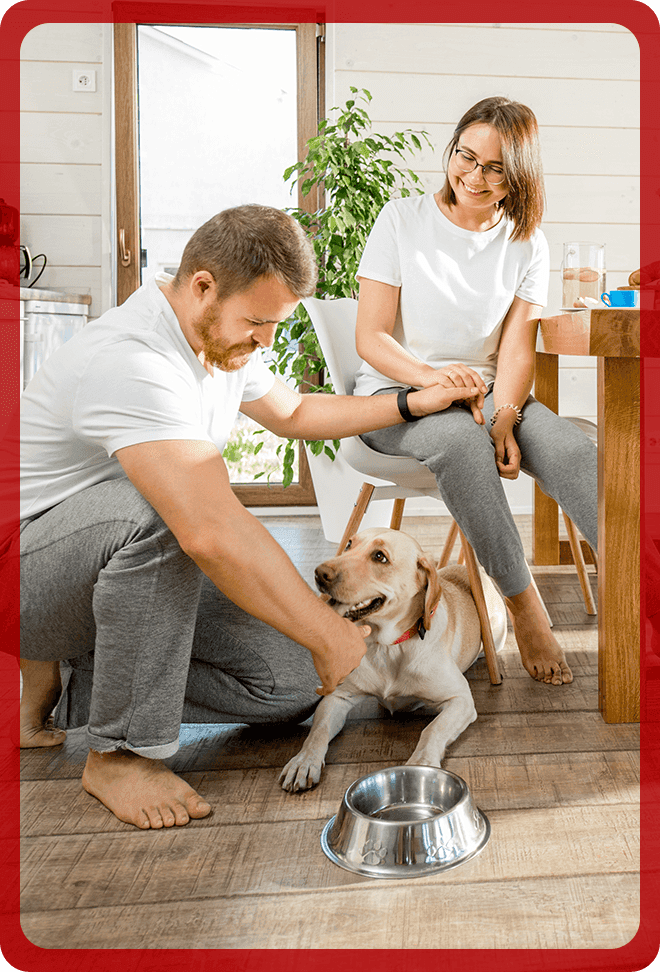
Rodent Control 101: A Helpful Guide For Colorado Springs Homeowners
When vacationers arrive at a hotel in Colorado Springs, there is usually a guide to local restaurants, attractions, and other places of interest in their hotel room. The purpose is to help tourists plan their vacation and know where to visit and how to organize their stay in our beautiful city.
If you have traveled to an unfamiliar location, you know that brochures, local magazines, and other informational pieces are helpful as you navigate unknown streets and venues. Guides navigate us through the unfamiliar, and when rodents enter our Colorado Springs home, we need help to know what to do next.
In this article, we help you understand what to do when rodents are inside your house. While this information is helpful, the first step is to contact the Colorado Springs pest control team from High Country Pest Control. Our rodent control services have removed rodents from homes using eco-friendly methods that protect your family for over three decades. As a Broncos Business Pick, you can trust us to deliver superior service that will give you 100% satisfaction. Please continue reading through this guide to combat rodents in your house effectively.

What Are Rodents?
Rodents are furry, four-legged mammals with two eyes, ears, and a tail. Although this description can apply to nearly all land mammals, what makes a mammal a rodent is a pair of upper and lower constantly growing incisor teeth. Rodents use these teeth to cut through roots, walls, floors, and other barriers. They develop sharp teeth as they gnaw on wood, plastic, glass, thin metal, and even concrete to keep the teeth from growing too large.
Four types of rodents give homeowners in Colorado Springs problems:
- Rats
- Mice
- Voles
- Pocket gophers
Rats and mice are a problem inside and outside houses, while gophers and voles are primarily an issue in the yard. In this guide, we will briefly examine each rodent, so you will know what type of animal is invading your property.

-
"Highly recommend."
I had a bad problem with mice several years ago and hired High Country. They solved my problem and I signed up for the quarterly service. Not only NO MORE MICE but also no more unwelcomed insects!
- Miles F. -
"Outstanding Service"
The tech that came to my house was absolutely amazing. They were quick, efficient, timely, and walked me though the process thoroughly and answered my dozens of questions. I was really impressed with the professionalism and the quality of their service.
- Soleil W. -
"Can't go wrong"
Service is always when they say it'll be, they didn't try to upsell to me when I first called over a year ago. Very reasonable when it comes to cost as well. If I could do it again with them for the first call I would.
- Matt L. -
"I highly recommend them!"
We have continued to use High Country Pest Control for the last two years and have continued to be very pleased with their service and the results! They are always timely, friendly, helpful and are knowledgeable about their craft.
- Kristen B.
Rodents Spread Disease And Damage Property
Because rodents constantly gnaw on nearby objects, they damage homes and yards. Voles, pocket gophers, and other lawn rodents chew through roots and eat bark, seedlings, mature trees, garden crops, ornamental plants, and vines. Gophers damage plastic water lines and drip irrigation systems. Borrows, tunnels, and mounds destroy lawns, cause soil erosion, and create tripping hazards.
While voles and gophers harm the lawn, mice and rats damage the interiors of homes by their need to chew on items. Rats create two to three-inch diameter holes in walls and floors. Mice and rats chew through wiring in walls and the attic, creating fire hazards; they destroy wiring in appliances. Other ways these house rodents damage homes include staining floors, walls, and furniture with urine, discoloring walls through greasy smudge marks, and odors from pheromones in their urine.
Rats and mice not only damage furniture, walls, floors, appliances, and insulation, their presence can adversely affect the health of those living in the house. Both rodent types spread leptospirosis, tularemia, and salmonellosis through their urine, saliva, feces, and human contact. In addition to these diseases, rats may also spread rat-bite fever, jaundice, cowpox virus, and trichinosis, while mice can also transmit hantavirus and adult respiratory distress syndrome.


Call us now to speak with a service professional who can answer your questions and provide a free, over-the-phone estimate.
How To Identify And Remove Factors That Attract Rodents
Rodents live in yards and houses because they have found food, shelter, and water. Rats and mice are omnivores, which means they will eat about anything. Pocket gophers prefer plants and roots, and while voles eat those items, they have an expanded palette that involves snails, insects, grains, and bark. Rats and mice forage for food in open garbage cans, compost piles, animal feces, sewers, and drains, while voles and gophers forage in yards and gardens.
All rodents need water, although some need more than others. Rats consume about one ounce of water daily, while mice can usually get the amount they need in the food itself. Inside homes, rats and mice live near drains, leaking faucets, and other high-moisture areas. Voles and gophers get water from roots and plants.
Voles and gophers create their shelter through underground tunnels, while rats and mice may also burrow in the yard; they also use leaf piles and yard debris for protection outside homes. When rodents invade Colorado Springs homes, they create nests in wall voids, underneath insulation, inside appliances, and behind cabinets, usually within 50 to 150 feet of food and water sources.
The following are tips to keep all rodents away:
- Remove sources of standing water
- Provide drainage to ditches and low-lying areas
- Eliminate yard debris
- Cover outdoor and indoor garbage containers
- Seal access points in the foundation and along the roofline
- Repair holes in the door and window screens
- Cover the crawl space and attic vents with 1/4-inch wire mesh
- Wrap trees and shrubs with 1/4-inch hardware cloth 18 to 24 inches high (voles)
- Bury 1/2 to 3/4-inch mesh two feet deep around plants and leave an additional six inches above ground bent at a 90-degree angle (gophers)
Exclusion techniques vary depending on the rodent. When High Country Pest Control arrives to provide the best rodent control near you, we will present you with custom rodent prevention tips for your location.

.2502170640108.jpg)
[1].2412040637390.jpg)
[1].2412040634434.jpg)